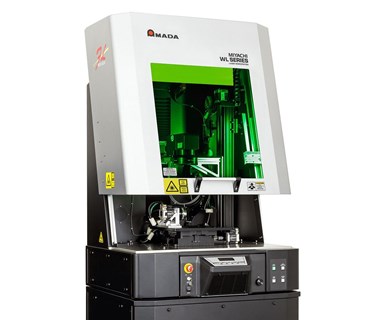Amada Miyachi's WL-300A Laser Workstation Marks Larger Parts
Amada Miyachi’s WL-300A laser processing workstation is designed for nanosecond pulsed fiber laser applications.
Share






Amada Miyachi’s WL-300A laser processing workstation, a larger version of the LMWS laser marker workstation, is designed for nanosecond pulsed fiber laser applications. The workstation is equipped with Amada Miyachi’s LMF fiber lasers (10-70 W).
The machine features a fast and precise motorized Z axis for focus adjustment, easy access to parts and tooling, and an optional XY table for step and repeat motion, the company says. Lens options include F-Theta 100 mm, 160 mm, 254 mm, and 420 mm for marking a variety of parts. An optional compact motorized rotary axis enables easier marking and welding on cylindrical parts. The M6 threaded-hole pattern mounting base plate eases fixturing. An extraction port with flexible tubing extracts harmful fumes created during the laser process.
The WL-300A can handle a variety of mark types, including line art graphics; shaded graphics; TrueType fonts; single-point or drill object arrays; data matrix or QR codes; and MS AutoDate, MS TextMerge, serialization, and barcode marks. Though primarily designed for laser marking and engraving applications, the laser source can also be used to weld and cut thin metals ranging to 0.010" (250 micron) thick.
Related Content
-
How to Successfully Adopt Five-Axis Machining
While there are many changes to adopt when moving to five-axis, they all compliment the overall goal of better parts through less operations.
-
How to Mitigate Chatter to Boost Machining Rates
There are usually better solutions to chatter than just reducing the feed rate. Through vibration analysis, the chatter problem can be solved, enabling much higher metal removal rates, better quality and longer tool life.
-
Quick-Change Tool Heads Reduce Setup on Swiss-Type Turning Centers
This new quick-change tooling system enables shops to get more production from their Swiss turning centers through reduced tool setup time and matches the performance of a solid tool.












